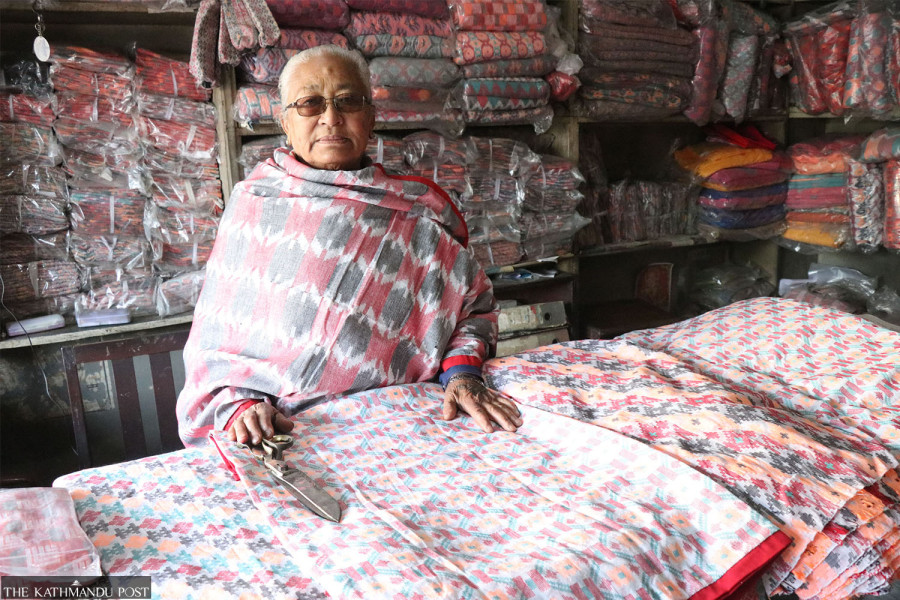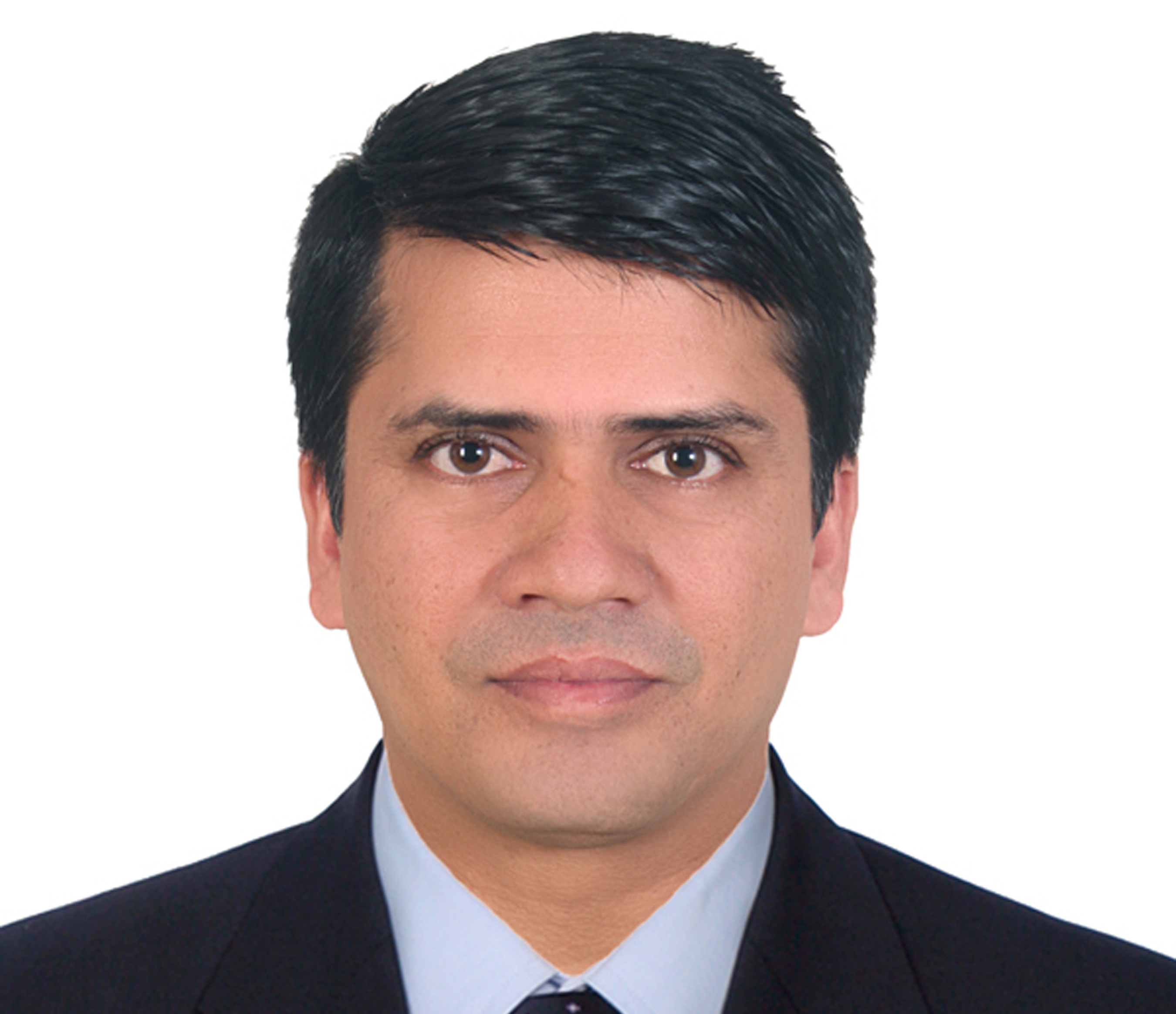Money
Deluge of cheap fabrics and modernity threaten Palpali Dhaka industry
Industry pioneer Purnamaya Maharjan calls for measures against counterfeit products.
Madhav Aryal
Modern weaving has been slowly killing the traditional handloom techniques, but Purnamaya Maharjan of Palpa district in western Nepal, is still fighting to preserve the decades-old weaving culture.
Now 86 years old, Maharjan has been urging the local, provincial, and federal governments to protect Palpali Dhaka—as counterfeit products have inundated the markets.
The dhaka industry in Palpa started in the late 1950s. It flourished for almost three decades. At its peak, it provided employment to more than 2,000 weavers, with its distinctive fabric sold in over 36 districts across Nepal.
Imported products were scarce and expensive then, so Nepalis bought the textiles from Palpa in large quantities.
But there was a time when a flood of cheap imports threatened to push the locally-made fabric out of the market.
Introduced by her late husband, Ganeshman, the weaving technology and looms were engines of rural revitalisation.
The traditional square-shaped wooden looms, operated by skilled craftsmen, once symbolised the essence of Palpali Dhaka.
Now, everything from machines to yarns and designs are all readily available in the market cheap, said Maharjan. “If the trend continues, it will push the original Palpali dhaka to the brink.”
Palpali dhaka is crafted exclusively from cotton yarn. According to Maharjan, her husband was the first to import the designs from Dhaka, Bangladesh. Gradually, the fabric gained its popularity due to its uniqueness.
The journey of Palpali Dhaka is intertwined with Purnamaya Maharjan's struggle and success.
Born to Purna Singh Maharjan and Lakshmi Shrestha, Purnamaya was the youngest child and only daughter, with an older brother.
Purnamaya often reminisces about her childhood when she played with the children of the Ranas, who ruled Nepal for 104 years until 1951. “While they later pursued their studies, we were deprived of the opportunity to read or write,” she said.
However, after her marriage, she and her husband lived in New Delhi, India for about three years.
When the couple was living in Daryaganj, New Delhi, she learnt textile skills, which she brought to Palpa after the birth of their daughter.
Back then, Purnaman Sakya, a democracy activist during the 1950s movement against Ranas, had encouraged the family to set up their Dhaka textile factory in Tansen itself.
Together, they initiated production with three looms, and gradually expanded to seven, by taking a loan of Rs3,000. She also began training other staffers to carry out the weaving process.
The business slowly started to prosper after the formal establishment of the Dhaka factory in 1958.
Dhaka pachhyaura (shawl), khaddar (coarse cotton) sarees, and bedsheets were their main products.
During that period, both King Mahendra and later his son King Birendra also showed interest in Palpali Dhaka.
The South Asian Association for Regional Cooperation (SAARC) summit held in Kathmandu, in 1987, however, lifted the recognition of Dhaka sarees, according to Purnamaya.
“The demand for Dhaka sarees during the SAARC Summit was high, which greatly helped boost the industry.”
The threads used in the Dhaka cloth are made from raw cotton.
With the help of a machine, it is wrapped into bundles and fitted into the grill. A pole is made with rolled-up Dhaka fibres from where the fibres are drawn.
Then it is prepared on the loom.
Even the design cards and patterns are crafted by hand. And the weaving process is entirely manual, is time-consuming and produces the finest quality cloth.
“That is why it is so expensive,” said Purnamaya.
By 1973, the demand for Palpali Dhaka had increased in the Nepali market.
“Due to the high sales, we were unable to keep up with the demand.”
"We even brought workers from other districts and trained them. At that time, there were 500 workers in our factory,” she said. “The responsibility of overseeing all the workers was mine. Most of them were women."
But modernity gradually started eating into the market.
In the modern era, the Nepali consumer market started preferring foreign goods over local products.
Lack of orders, rise in consumption of foreign materials, increase in the price of inputs, and the lengthy process of creating handcrafted products are some reasons slowly throttling the handloom sector.
"Though Palpali Dhaka has revived to some extent, the situation is still challenging. Today, we have only 26 workers left," said Purnamaya. "Now, we can't even find new workers.”
Despite suffering from backaches and needing a cane support, Purnamaya’s dedication remains intact. She actively works in the production and daily management of the shop.
Purnamaya, mother to four sons and two daughters, continues to advocate for the empowerment of local artisans and recognition of their craftsmanship.
“I will continue to manage the shop for as long as my health permits,” she said.
One major difference between Palpali Dhaka and similar products in the market is the price.
Counterfeit Dhaka fabric sells for Rs300 per metre, while the genuine is priced at Rs1,500 a metre.
According to Purnamaya, who previously served as the president of the Palpali Dhaka Association, the annual business of Dhaka cloth in Nepal ranges from Rs800 million to Rs1 billion.
Initiatives from small and medium enterprises and several NGOs have succeeded in training several women in the art of weaving, but they have struggled to find a market to sell the products and expand their businesses.
“Nepal’s traditional textiles need recognition, and the government’s efforts will be crucial to preserve the heritage.”




 18.12°C Kathmandu
18.12°C Kathmandu














